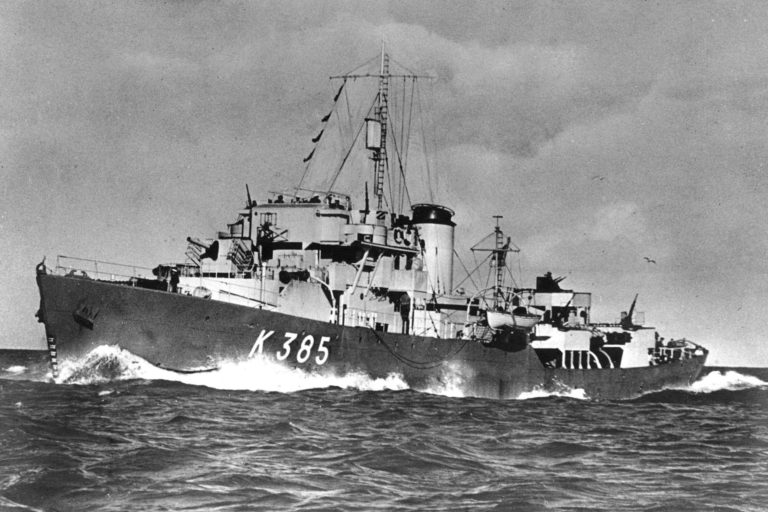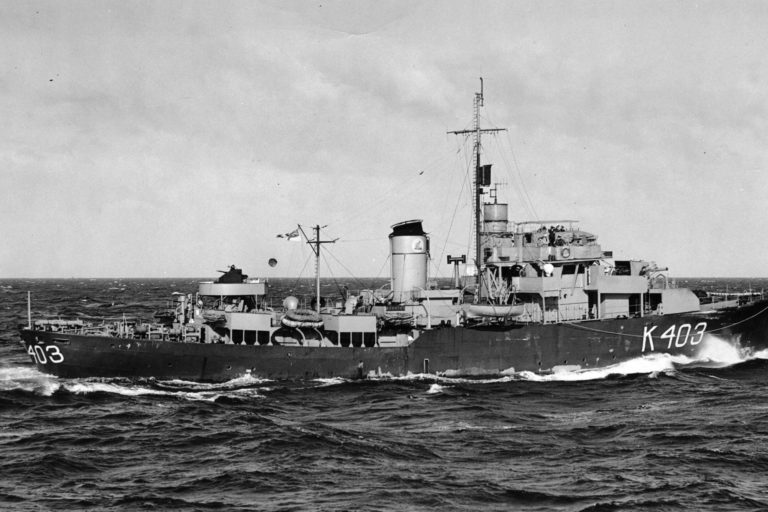After World War One, HMS Philomel’s role was in the form of a depot ship, providing training for new entrants and specialist maintenance personnel. Auckland was chosen as the location for these facilities. Berthed alongside on what would become known as ‘the Training Jetty’ the old ship became home to generations of new entrants.
Ship Details
Class: Pearl-class cruiser (3rd-class)
Built: HM Naval Dockyard Devonport, Plymouth
Laid down: 9 May 1889
Launched: 28 August 1890
Completed: March 1891
Dimensions: 84.7 x 12.5 x 5.3m
Displacement: 2575 tons
Machinery: 2 shaft reciprocating coal fired ihp= 19 knots
Complement: 221 officers and ratings
Armament:
8 x 4.7-inch (119mm) QF guns
8 x 3pdr guns
2 x 14-inch (356mm) torpedo tubes
4 x machineguns
1 x 12pdr field gun for Landing Parties
As training ship:
1 x 6-inch (152mm) gun single mount
1 x 4-inch (102mm) gun single mount
2 x 12pdrs (later removed)
Service: As cruiser 1891-1917
As Depot Ship 1917-1946
Decommissioned : 1946 and the hulk was sunk off the Coromandel
Royal Navy Service
1894 Bohemie Creek Expedition
1896 Bombardment of Zanzibar
1897 Benin Expedition – Cruise East & West Africa, Somaliland and Persian Gulf
1899-1900 Boer War – contributed to Naval Brigade land force
1914-1917 First World War – troopship escort 1914, Red Sea & Persian Gulf 1915-1917 – returned to New Zealand in 1917 to serve as a depot ship.
New Zealand Service
1917-1946 Depot Ship at the Devonport Naval Base in Auckland. When she was decommissioned in 1946 her name was transferred to the shore establishment which in still in use to this day.
To
Captain Percival Henry Hall Thompson.
Royal Navy
H.M.S. “PHILOMEL”.
Arrangements having been made for the paying off of H.M.S. “PHILOMEL” by the Admiralty, and also for her recommissioning for service under the New Zealand Government on the 15th day of July, 1914, it is my direction that you hoist your pendant on board that ship at 9 a.m. on the date mentioned, and assume command from that date and time.
Signed Liverpool
Governor.
Before HMS Philomel was commissioned for service under the New Zealand Government in 1914, the ship had already had an eventful 24-year life. Built at Devonport Dockyard, it was launched on 28 August 1890 and first commissioned into the Royal Navy on 10 November 1891. Philomel was a third class cruiser of the Pearl-class, one of nine similar ships. She cost £141,802 to build.
In mid 1892 Philomel deployed to the Cape of Good Hope Station, where it would spend the, next six years. At the end of the first commission the ship took part in the Brohemie Creek Expedition (Gambia) in September 1894. This punitive expedition resulted from several men being killed or wounded when a Government boat was fired upon in August. Captain Charles Campbell of Philomel led one detachment of seamen in an attack on the principal town, where there was no opposition but 106 guns were captured, as was the chief’s treasury. Recommissioning on station in August 1894, Philomel participated in the M’ wele Expedition in August 1895 and the Bombardment of Zanzibar in August the following year. The latter resulted from a prince trying to usurp the throne on the death of the Sultan. Britain, with the acquiescence of the other European embassies, supported the true heir. After 37 minutes of bombardment of the Sultan’s palace, the rebels left and the rightful successor was proclaimed. In January 1897 the British Consul General in Niger was attacked and the following month an expedition was mounted to Benin to arrest those responsible. Personnel from Philomel formed part of the Naval Brigade and during the attack the ship’s Captain and the Gunner (T) were wounded.
After an eventful three and a half year commission, Philomel returned to Devonport in March 1898 and paid off for refit. On its return the people of the Borough of Stonehouse decided to fête Philomel and the officers and ship’s company marched through the streets to a civic reception and lunch in the town hail. The illuminated address commemorating the occasion is now in the Philomel wardroom. With the refit completed the ship recommissioned at the end of 1898 and returned to the Cape Station. The following year the Boer War broke out in South Africa and Philomel was tasked on various duties around the coast, while some officers and members of the ship’s company were employed ashore in actions such as Modder River, the march to Pretoria, the Battle of Colenso and the relief of Ladysmith. Philomel returned to England in March 1902 and paid off being laid up at Bowness in the Firth of Forth. In 1904 Philomel was included in Admiral Fisher’s famous list of “sheep, lhamas and goats” – ships too old to fight and too slow to run away — as one of the ships to be placed in reserve but without any maintenance. However, three years later the Ship was towed to Haulbowline in Ireland and refitted, being commissioned again on 1 February 1908. This time Philomel joined to the Red Sea Division of the Mediterranean Fleet. During operations in Somaliland Philomel landed troops as well as its own landing party. There was however, little action. After a commission of just over a year the ship paid off at Portsmouth in mid 1909, immediately recommissioning and deploying to the Persian Gulf and Middle East. Two years later, at Aden, Philomel again recommissioned, spending a further two years in the area. Most of this time was spent intercepting and inspecting dhows, looking for weapons and slaves. In October 1913 the ship was recommissioned again, at Singapore with the intention of it being handed over to the New Zealand Government, which eventuated in July 1914.
Two weeks later, with the ship on a shakedown cruise war broke out and Philomel returned to Wellington to prepare for war. The New Zealand Government had agreed to occupy German Samoa and an expeditionary force was raised to achieve this. Two troopships were required, but the only escorts available were the three obsolete cruisers of the New Zealand Division, one being the newly commissioned Philomel. With a strong German cruiser squadron in the Pacific, this escort was not sufficient and the Admiralty ordered the Australian Squadron to assist. Suitably strengthened the Samoan Expeditionary Force went ashore in Apia on 30 August, the German garrison choosing not to resist.
After the ship’s return from Samoa, Philomel underwent essential maintenance before joining the escort of the troopships of the Main Body of the New Zealand Expeditionary Force in October, when they sailed from New Zealand. Philomel remained as part of the escort until it reached Western Australia, where it detached and proceeded separately to Singapore and then on to the Middle East. During early 1915 Philomel operated in the Eastern Mediterranean and at the beginning of February was off the coast of Syria, in the vicinity of Alexandretta. Captain Hall-Thompson sent a landing party ashore on 8 February to investigate a convoy of pack mules. This was ambushed by a strong force of Turks, one man being killed and several wounded, two mortally. Able Seaman W.E. Knowles from Christchurch was one of those who died, he being buried at sea the next afternoon. Willie Knowles has the distinction of being the first New Zealand naval rating killed in action.
By mid year the ship was operating in the Red Sea, patrolling for arms smugglers and supporting the garrison at Aden. At the time her service was reported in the Dominion:
The men of H.M.S. Philomel, New Zealand’s only warship, operating somewhere off the coast of Asia, are having a strenuous time, but according to news received by the Defence Minister they are doing well.[1]
This support included landing a party with a machine gun to assist in the defence of the port. It formed part of a force which repelled a Turkish advance to within 20 km of Aden. During the return to Aden, in the heat of the day, three men succumbed to heat stroke and died. Together with Willie Knowles, these men are commemorated on a memorial above the door of St Christopher’s Chapel in the present base. From the Red Sea Philomel was sent to the Persian Gulf, operating there from late 1915 until early 1917. The ship’s main tasks were patrolling to intercept gun runners and German spies. Additionally Captain Hall-Thompson was often the Senior Naval Officer in the area.
By the end of 1916 the ship was in need of an extensive refit, but being 27 years old, the cost was not considered economic and the ship returned to New Zealand, being met at Wellington by a guard of 50 corporals from the NZEF as well as VIPs. Home, the ship was paid off, with only a care and maintenance party remaining on board. When, in 1918, it was learned that the German Raider Wolf had laid mines off New Zealand Philomel took on the role of depot ship for the trawlers taken up for minesweeping.
After the war it was decided that the New Zealand Navy would comprise up to three cruisers, if possible, supplemented by destroyers, although the priority was the cruisers, which were the smallest ‘stand alone’ vessels at the time. Supporting the operational ships would be Philomel in the role of a depot ship, providing training for new entrants and specialist maintenance personnel. Auckland was chosen as the location for these facilities and with the support of HMS Chatham, Philomel steamed on its last voyage, to the naval base. Berthed alongside on what would become known as ‘the Training Jetty’ the old ship became home to generations of new entrants.
To create classroom space the engines were taken out, but this was never going to be satisfactory and the early 1920s saw the commencement of a struggle to have facilities provided ashore. The first of these was the acquisition of an old building from the Army which was sited at the base of what would become known as ‘Monowai Hill’. Beginning as a YMCA canteen this building has housed a variety of functions over the years, presently being the Junior Ratings Fleet Mess. Soon afterwards three classrooms were built on the foreshore, the first of the ‘green huts’ which were finally removed in early 2000.
Until 1942, when the maintenance facilities formally became His Majesty’s New Zealand Dockyard, Artisans in Philomel provided personnel to assist ships staff in undertaking maintenance, using equipment owned by Auckland Harbour Board under a joint working arrangement. The experiment of naval personnel using leased facilities was not a success and it was with much relief that the Navy took over the facilities in 1936, the Harbour Board only retaining the dry dock. Major construction took place in the mid 1930s and the base was fully developed during the Second World War and many of the present buildings date from that time. In 1941 most of the training function of Philomel was transferred to HMNZS Tamaki, as was the ship’s mainmast, which went to the new establishment. Following the Second World War Philomel became responsible for Basic Branch Training, a function it retained until 1975.
By the end of 1945 the old ship was well beyond its anticipated life and it was put up for tender. On 17 January 1946 the White Ensign was hoisted over the shore establishment and soon after the ship was towed to Coromandel by its new owner. There it was stripped, much of the wood being used to construct a small coastal trading vessel named Coromel. In August 1949, 4kg of explosive sent the hulk to the bottom of the sea off Cuvier Island at the entrance to the Hauraki Gulf. At the turn of the new century, as part of a major reform of the Naval Command structure, HMNZS Tamaki ceased to exist and Philomel assumed responsibility for the whole of the naval base and facilities in November 2000.
The Ship’s Badge
Battle Honours:
Navarino 1827 benin 1897 South Africa 1899-1900
Motto:
Fide et Fortitudine (By faith and fortitude)
It is believed that the badge of HMNZS Philomel was designed in a mess deck on board the ship during the First World War. It is known to have been in existence in 1926/27.
When the Royal New Zealand Navy began formalising its ships badges in the late 1940s, the design in use was not approved of, by either the Naval Board or the College of Heralds and alternatives were suggested. A spirited rearguard action by the Captain of Philomel eventually prevailed and the figure of Philomela holding a nightingale became the badge of the ship. A more persuasive argument was that by the time the discussions came about, the design had already been incorporated into many fixtures in the establishment. Although officially, if reluctantly sanctioned, the badge was not officially defined. Time obscured the designer’s aims and for a period in the mid 1960’s Philomela was sometimes depicted as a Mᾱori woman and moves were made to have this officially recognised but this change didn’t happen and Philomela remains Greek.
References:
[1] Fielding Star, Volume XI, Issue 2760, 17 July 1915, Page 2

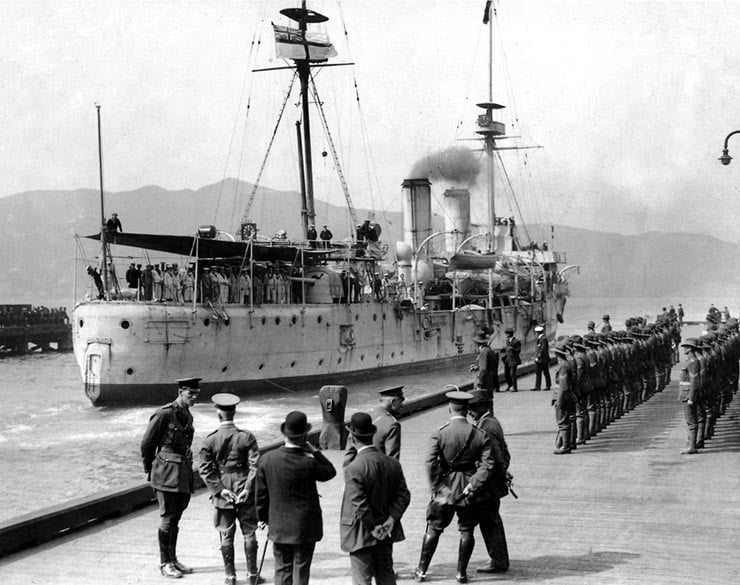

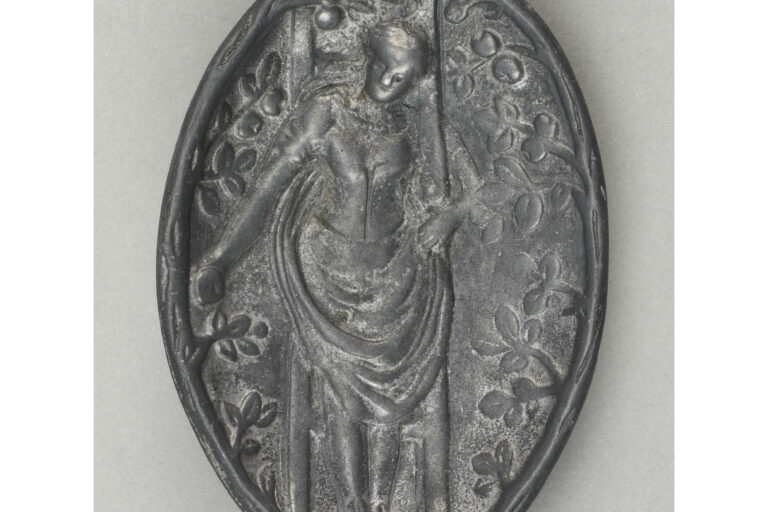

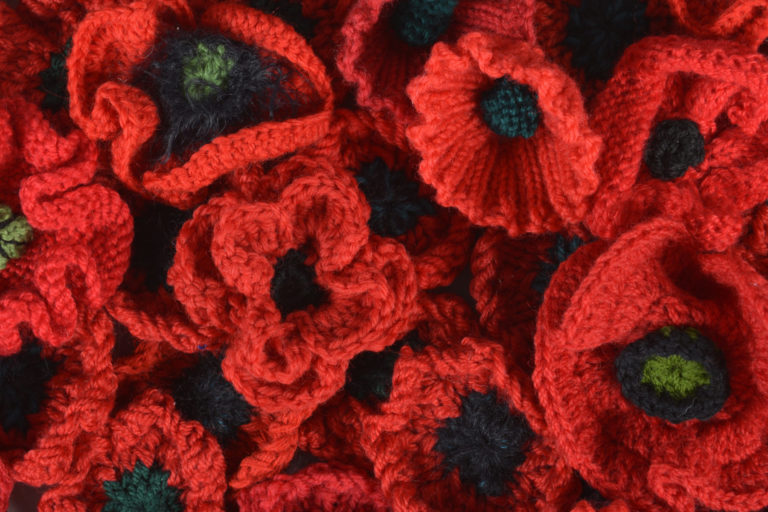
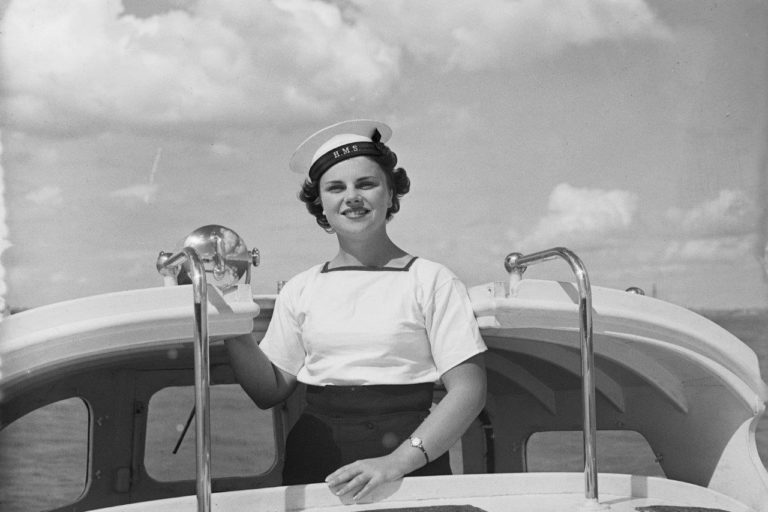
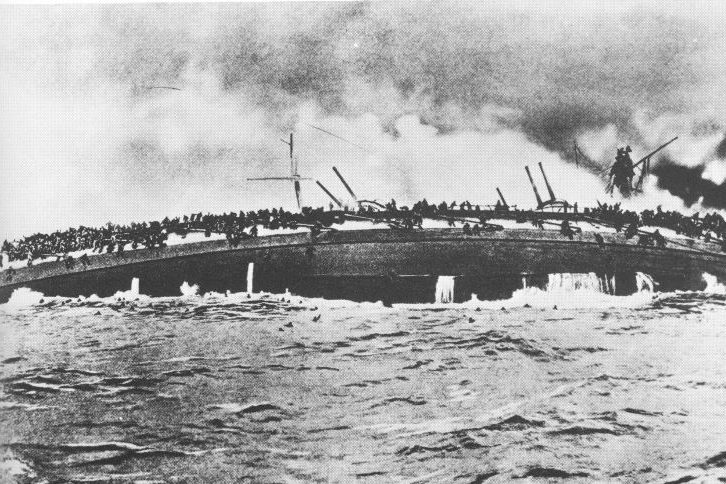
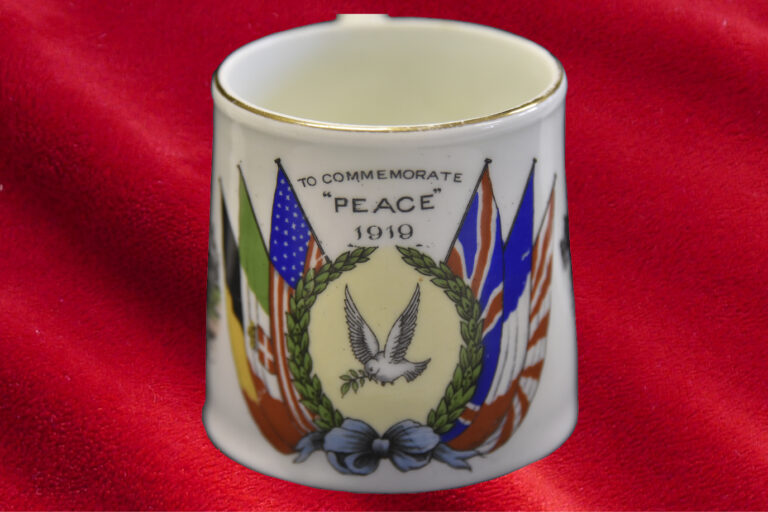
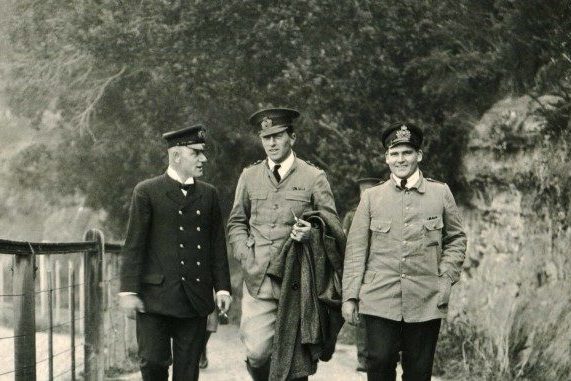
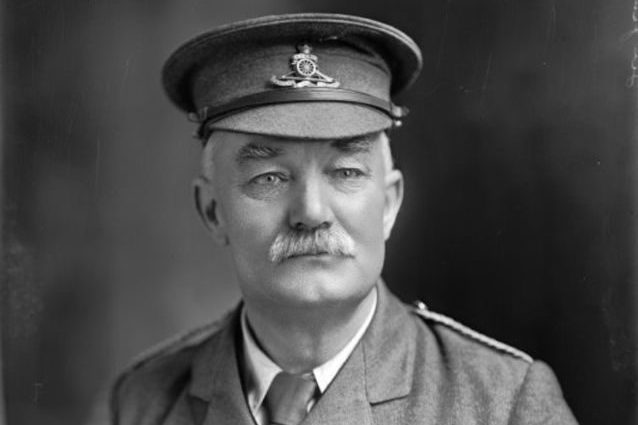


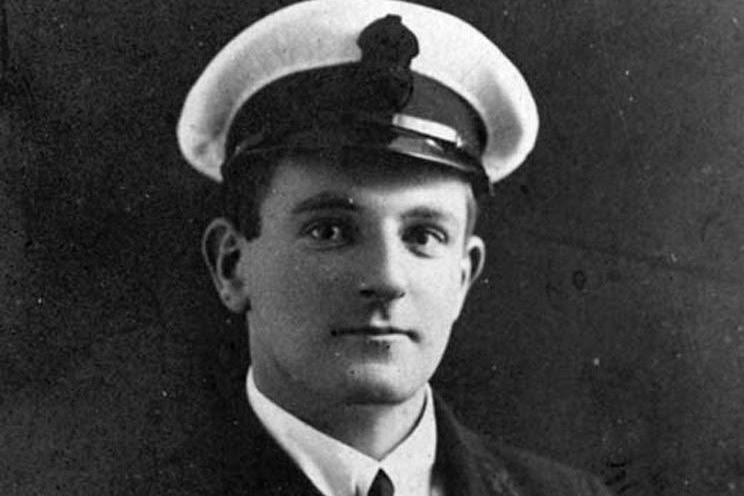
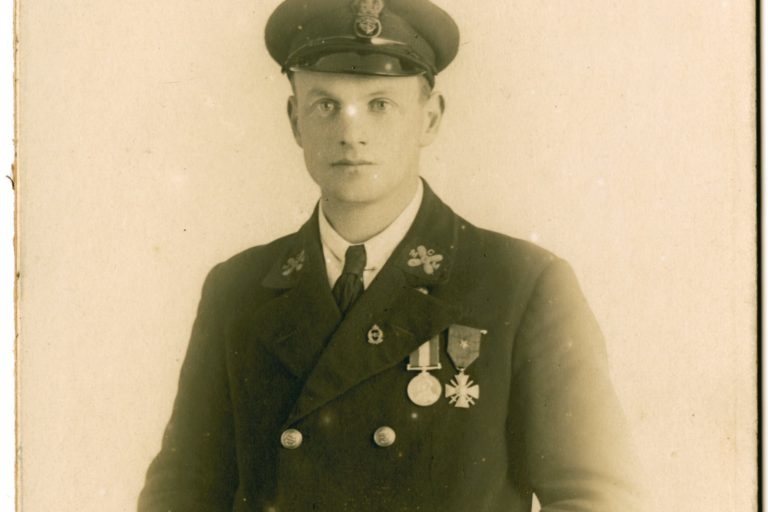
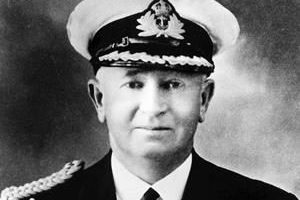
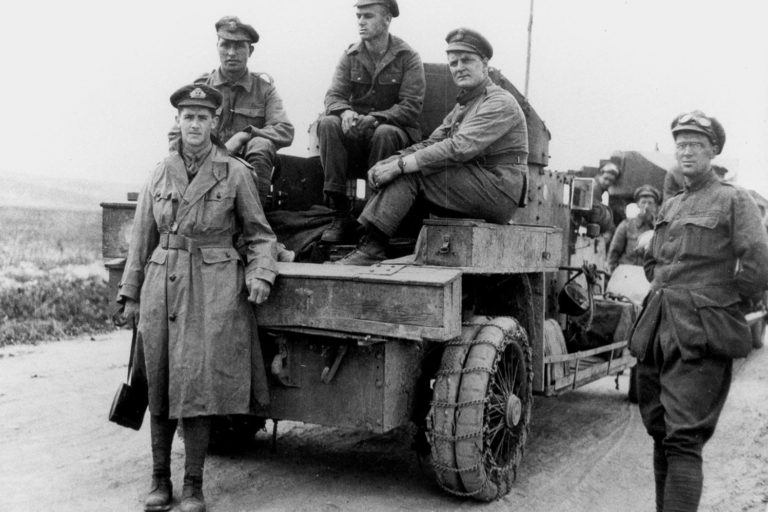
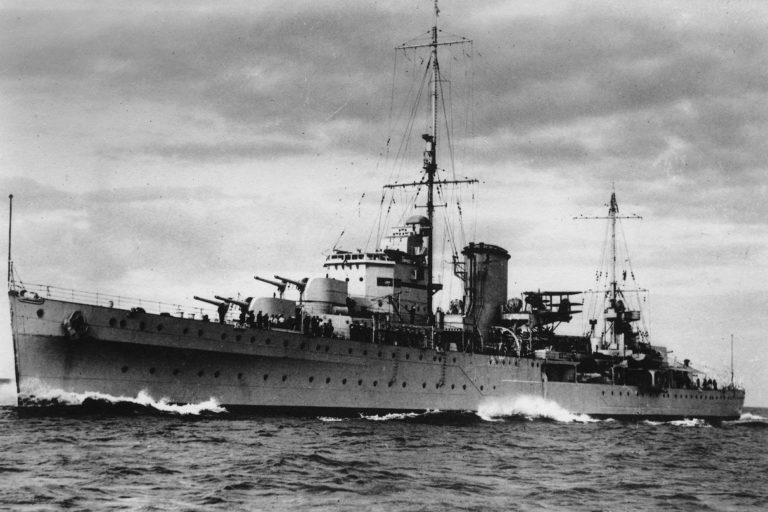
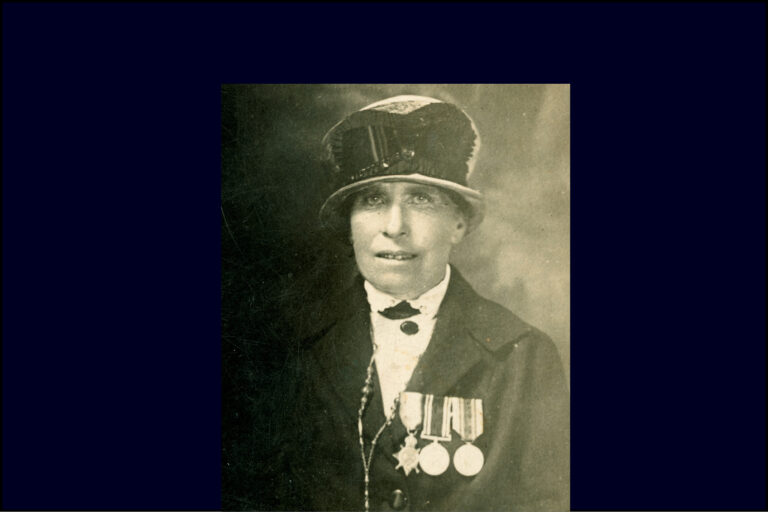
![Amokura Training Ship Amokura [formerly HMS Sparrow]](https://navymuseum.co.nz/wp-content/uploads/amokura.jpg)
